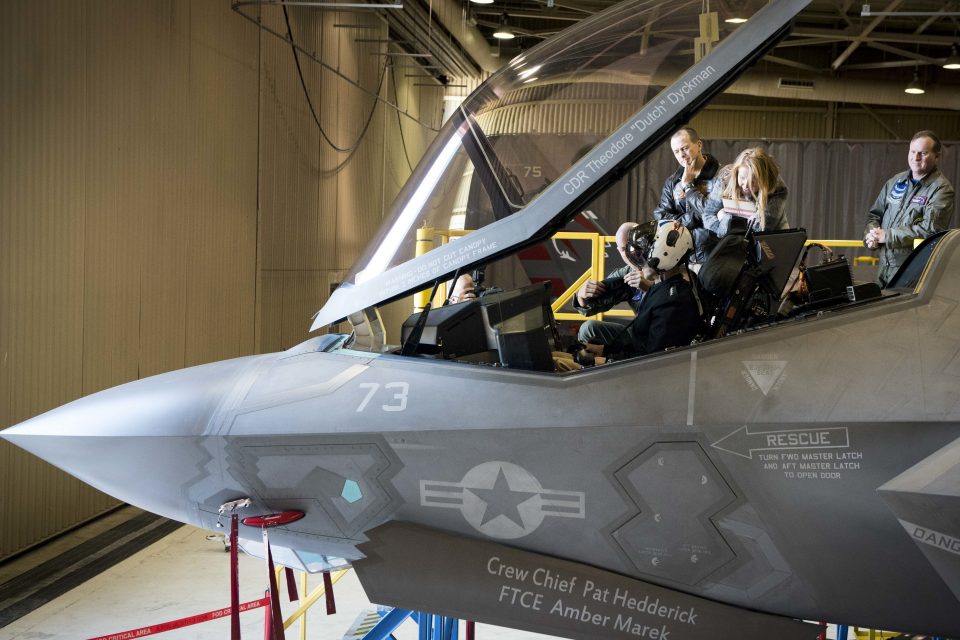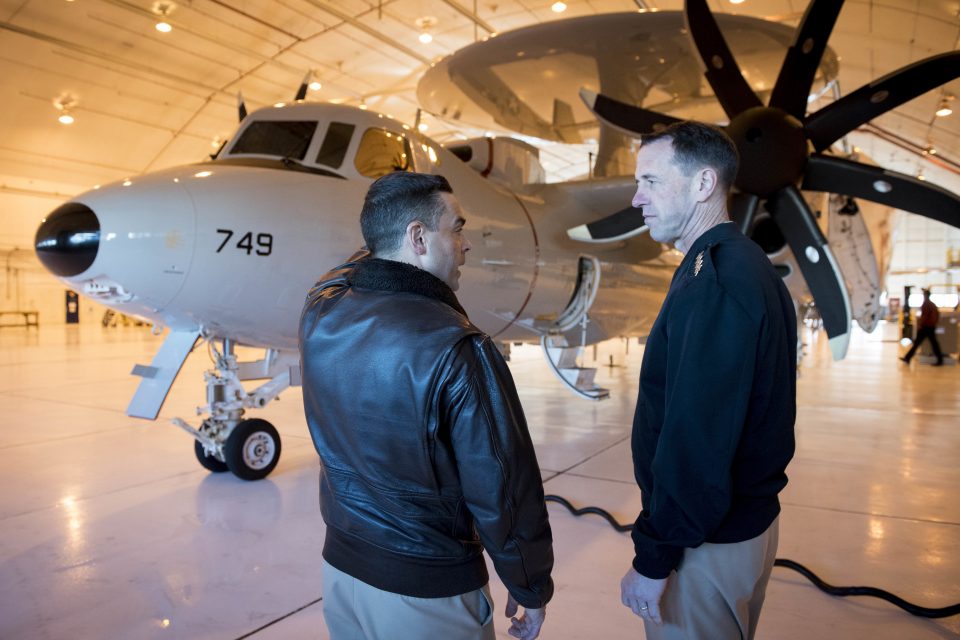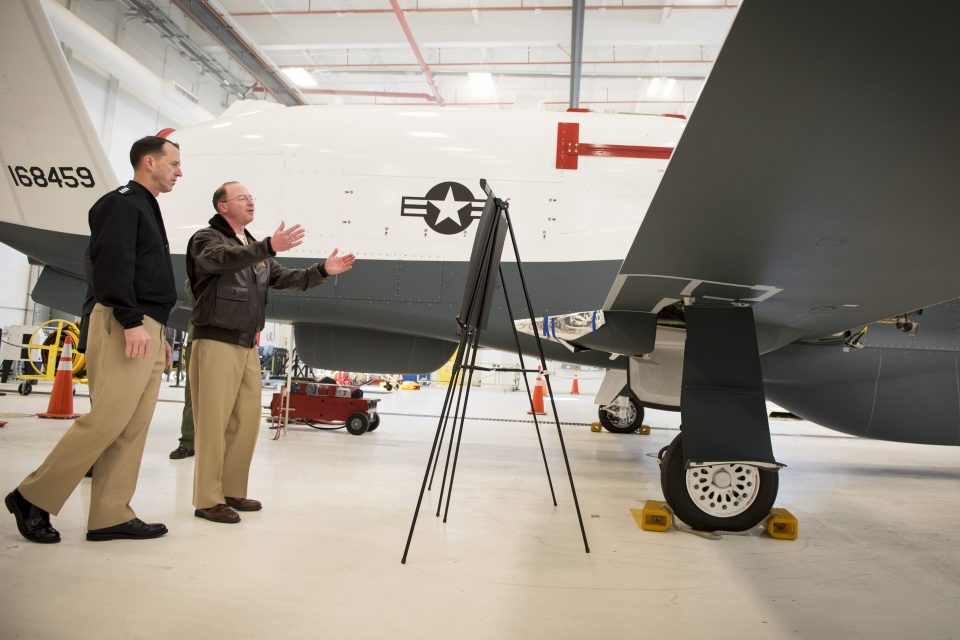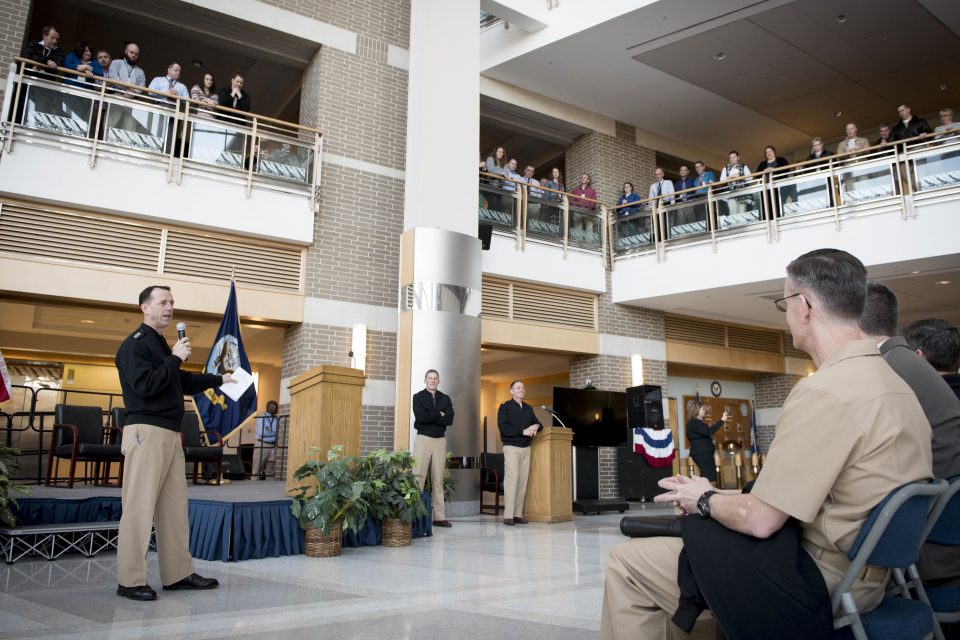2017-09-06 The US and allied militaries are working a significant military transformation.
This transformation is being driven in part by the shift from engaging in slo mo war to preparing for high intensity and high tempo operations.
In many ways, the two key regions where this transformation is being ramped up is the defense of the North Atlantic and in the Western Pacific.
We have launched a Second Line of Defense Forum looking at the question: How will the US and the allies meet the challenge of shifting from slo-mo to high intensity combat operations?
And next year the Williams Foundation will hold two seminar addressing the general challenge and specific capabilities which need to be shaped to make this shift.
High-intensity warfare is characterized by rapidly evolving, high-lethality, multi-domain operations.
The skills, tactics, procedures, and the level of force integration required for successfully conducting such operations will challenge the generation of officers who have come to maturity fighting in counter-insurgencies.
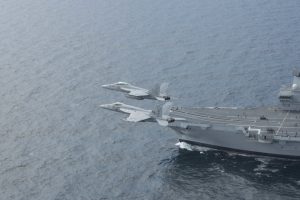 ATLANTIC OCEAN (Aug. 5, 2017) An F/A-18E Super Hornet attached to the “Tomcatters” of Strike Fighter Squadron (VFA) 31, bottom, and an F/A-18F Super Hornet attached to the “Blacklions” of VFA-213 fly in formation above the HMS Queen Elizabeth (R08) during exercise Saxon Warrior 2017, One aspect of shaping the kill web will be flying with an all fifth generation carrier (the Queen Elizabeth) with large deck US carriers which carry a mixed 4th/5th gen force and with the new USS America which will fly F-35s as its strike aircraft.
ATLANTIC OCEAN (Aug. 5, 2017) An F/A-18E Super Hornet attached to the “Tomcatters” of Strike Fighter Squadron (VFA) 31, bottom, and an F/A-18F Super Hornet attached to the “Blacklions” of VFA-213 fly in formation above the HMS Queen Elizabeth (R08) during exercise Saxon Warrior 2017, One aspect of shaping the kill web will be flying with an all fifth generation carrier (the Queen Elizabeth) with large deck US carriers which carry a mixed 4th/5th gen force and with the new USS America which will fly F-35s as its strike aircraft.
It is a culture shift; it is a platform shift; it is an acquisition shift; it is an exercise shift.
In the event of a high intensity war breaking out, mobilization is a critical capability.
This means that in preparing for the prospect of high intensity war, a premium is placed on planning, establishing and meeting the requirements for the U.S. and allied industrial base to surge war winning platforms and weapons to the fight.
How will the US and the allies make these shifts, and to take the force we have and make it more high intensity combat ready and ensure that modernization going ahead enhances the capability to engage in and win high intensity conflict?
This special report looks at an aspect of this shift, namely crafting the maritime forces to be able to operate in and execute a kill web, rather than to operate in a legacy kill chain.
Airpower and naval power emerged from World War II as integrated components able to fight in a single battlespace.
For the navies, carrier aviation was the key element for air enablement along with land based air which could operate from key land based choke points to provide for key capabilities to assist in controlling the sea lines of communication.
With the emergence of fifth generation aviation, the manned-unmanned dynamic and the evolution of weapons, a new version of operating in the integrated battlespace is emerging.
The US Navy refers to this as the kill web, a capability to move from a linear kill chain to a distributed fleet able to tap into capabilities available throughout an integrated force.
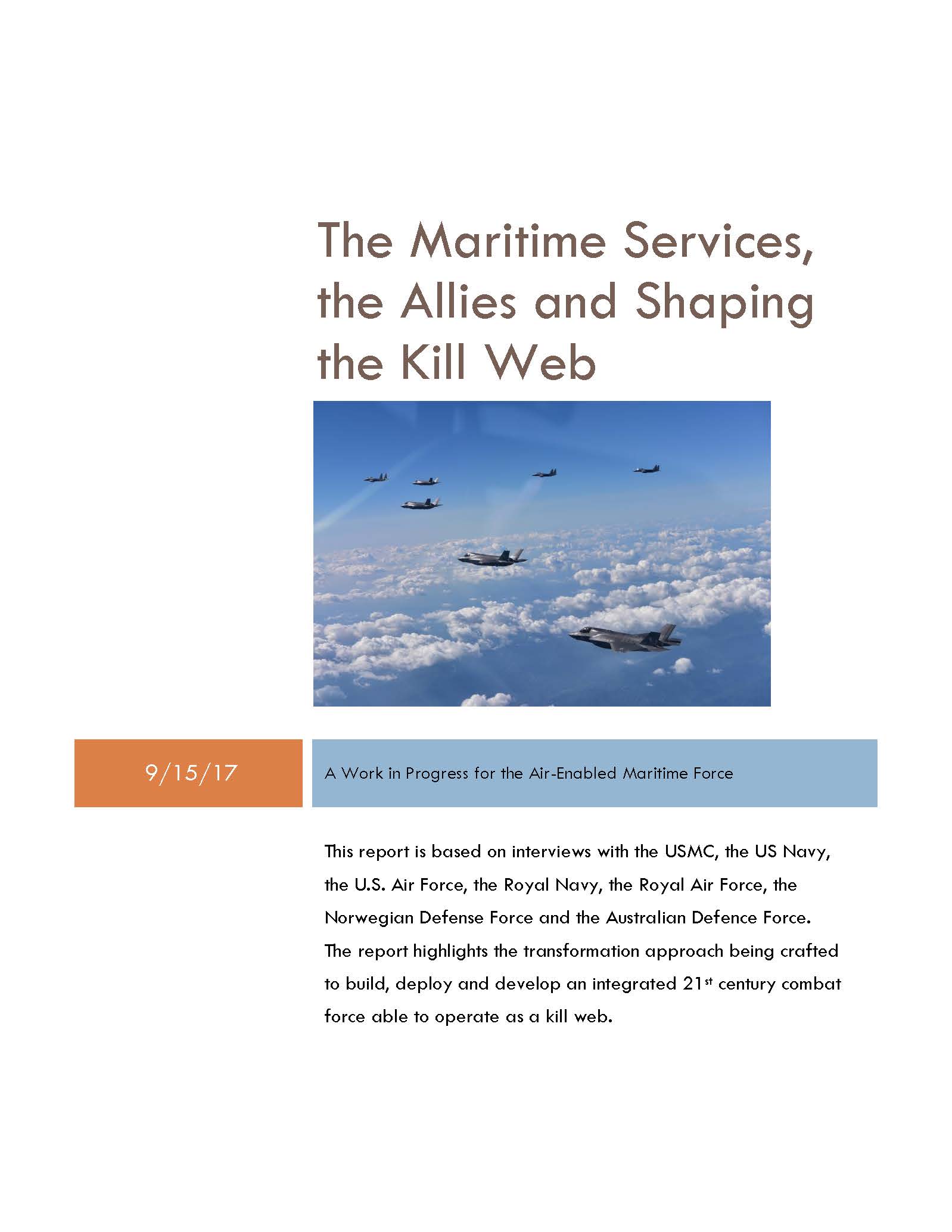
This special report looks at the emergence of the kill web from the perspective of the maritime and air forces.
We first look at some conceptual issues in terms of how to characterize the way ahead for the fleet as it integrates with land and sea based capabilities to deliver its combat effect.
A key element of the change is shaping a more distributed C2 structure with a mission command approach, rather than the kind of hierarchical structure which can be used in slo mo war.
The shift from the kinds of land wars fought in the past decade and a half to operating across the range of military operations to insert force and to prevail in a more rapid tempo conflict than that which characterized counter-insurgency operations carries with it a need to have a very different C2 structure and technologies to support those structures.
The shift to higher tempo operations is being accompanied by platforms which are capable of operating in an extended battlespace and at the edge of the battlespace where hierarchical, detailed control simply does not correlate with the realities of either combat requirements or of technology which is part of a shift to distributed operations.
Distributed operations over an extended battlespace to deal with a range of military operations require distributed C2; not hierarchical detailed micro management.
In effect, the focus is upon shaping the commander’s intent and allowing the combat forces to execute that intent, and to shape evolving missions in the operations, with the higher level commanders working to gain an overview on the operations, rather than micro-management of the operations.
Unfortunately, the relatively slow pace of COIN, and the use of remotes (UAVs or RPAs) in the past decade have led to a growing practice of growing the level of command in order to try to exercise more detailed control. This has led to the current situation in the air operations against ISIS where you have more members of the CAOC than you have actual air strikes!
According to one of the architects of Desert Storm, Lt. General (David) Deptula, the CAOC for Desert Storm was quite lean, and the goal was to get the taskings into the hands of the warfighters to execute, with a later battle damage assessment process then informing decisions on the follow on target list.
It was not about micro managing the combat assets.
And this was with air power multi-mission assets, which went out to execute a command directive in a particular area of the battlespace to deliver a particular type and quantity of ordinance in that area of the battlespace.
With new air technologies, multi-tasking platforms will fly to the fight and execute the initial commander’s intent but will shift to the mission as needs arise during the air combat operation.
Fleeting targets are a key reality, which requires the ability for the pilots to prosecute those targets in a timely manner, rather than a deliberate C2 overview manner.
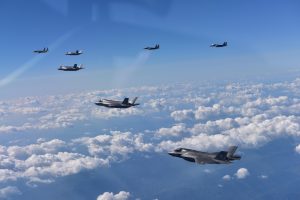 USMC F-35Bs fly with USAF strategic bombers and South Korean F-15Ks during a 10-hour mission from Andersen Air Force Base, into Japanese airspace and over the Korean Peninsula, August 30th. This mission was conducted in direct response to North Korea’s intermediate-range ballistic missile launch, which flew directly over northern Japan on August 28 amid rising tension over North Korea’s nuclear and ballistic missile development programs. (Photo by Republic of Korea Air Force). The F-35Bs could come from a fixed airfield, an airfield dispersed in an island chain or launched from a ship. That is the advantage of flying an F-35B in the age of the kill web.
USMC F-35Bs fly with USAF strategic bombers and South Korean F-15Ks during a 10-hour mission from Andersen Air Force Base, into Japanese airspace and over the Korean Peninsula, August 30th. This mission was conducted in direct response to North Korea’s intermediate-range ballistic missile launch, which flew directly over northern Japan on August 28 amid rising tension over North Korea’s nuclear and ballistic missile development programs. (Photo by Republic of Korea Air Force). The F-35Bs could come from a fixed airfield, an airfield dispersed in an island chain or launched from a ship. That is the advantage of flying an F-35B in the age of the kill web.
Put in other terms, the command structures will need to “lean out” and to work with warfighting assets where the pilots and operational decision makers are at the point of engagement, not in a building housing a CAOC.
This requires building in a new approach to C2 from the ground up as the new assets are introduced into the force. For example, the introduction of the F-35 should bring with it a fundamental rethink away from hub-and-spoke C2 to distributed C2 and modular force package operating forces.
C2 for fifth generation aircraft is about setting the broader combat tasks and unleashing them to the engagement area, and once there they can evaluate the evolving situation during their engagement time and decide how best to execute the shifting missions within the context of the overall commander’s intent.
Hierarchical command and control of the sort being generated by today’s CAOCs is asymmetrical with the trend of technology associated with fifth generation warfare.
https://sldinfo.com/reshaping-operational-and-training-approaches-airpower-led-combat-innovation/
The emerging perspective which can be characterized as a kill web, or the “network as a weapon” or a “fifth generation enabled force” can be encapsulated in the following graphic, which reflects the convergent lines of transformation shaping a foundation for the next decade of change.
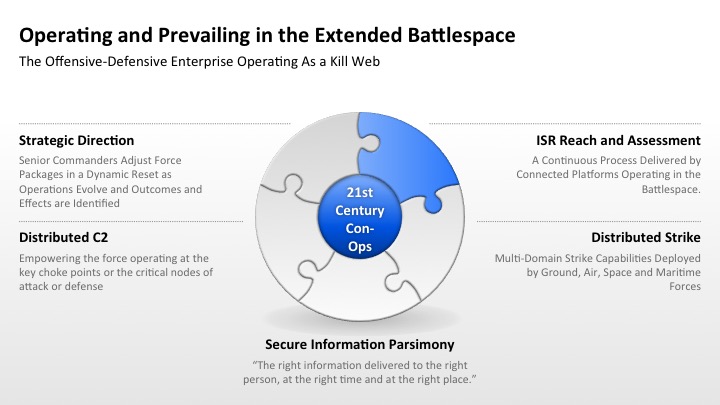
We next look at the emergence of key elements of the kill web entering service with today’s US Navy, USMC, the RAF and the Royal Navy, and the RAAF and the Royal Australian Navy.
Our visits to FALLON, MAWTS-1, to the UK and to Australia provided several data points on how the U.S. and core allies are working on building out a kill web air enabled force.
We then look at the significant opportunities, which new training and development integration can provide to shape a more integrated force able to execute a kill web going forward.
Finally, we then address two case studies of the way ahead: working the unmanned-manned transition and the electronic warfare or the non-kinetic payload domain.
And we conclude with some thoughts from the newly appointed Air Commander Australia on the challenge of shaping an effective 21st century combat force.
And to put this into a very real world context, new aviation assets are being morphed into a more effective maritime combat force.
As Admiral Swift has recently noted with regard to the current Korean situation:
The U.S. would continue deploying heavy firepower to the region, including “carrier strike groups, expeditionary strike groups, AEGIS ships, the world’s most capable submarine force and advanced aircraft like the F-35, P-8 and MH-60R..
“Let our potential adversaries take pause and note that the only naval force more powerful than the U.S. Pacific Fleet is the entirety of the United States Navy.”
Editor’s Note: The slideshow above shows the CNO visiting Pax River earlier this year and focusing on the new high end aviation assets entering the fleet and which will be key players in the build out of a kill web enabled force.
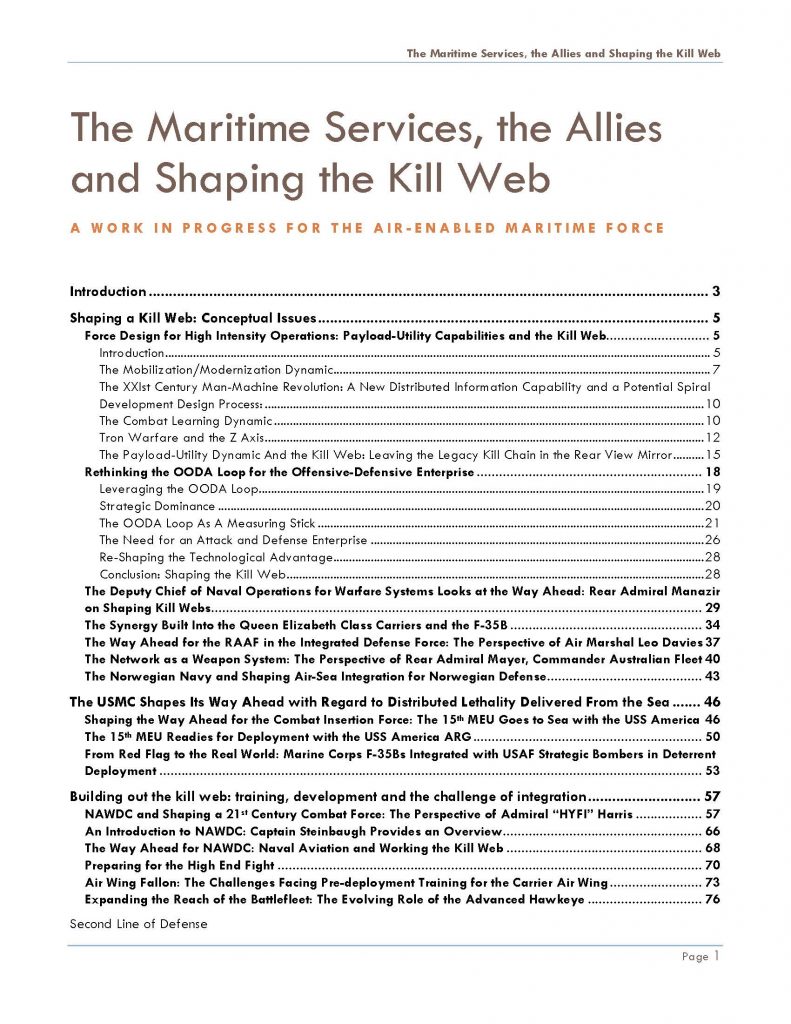
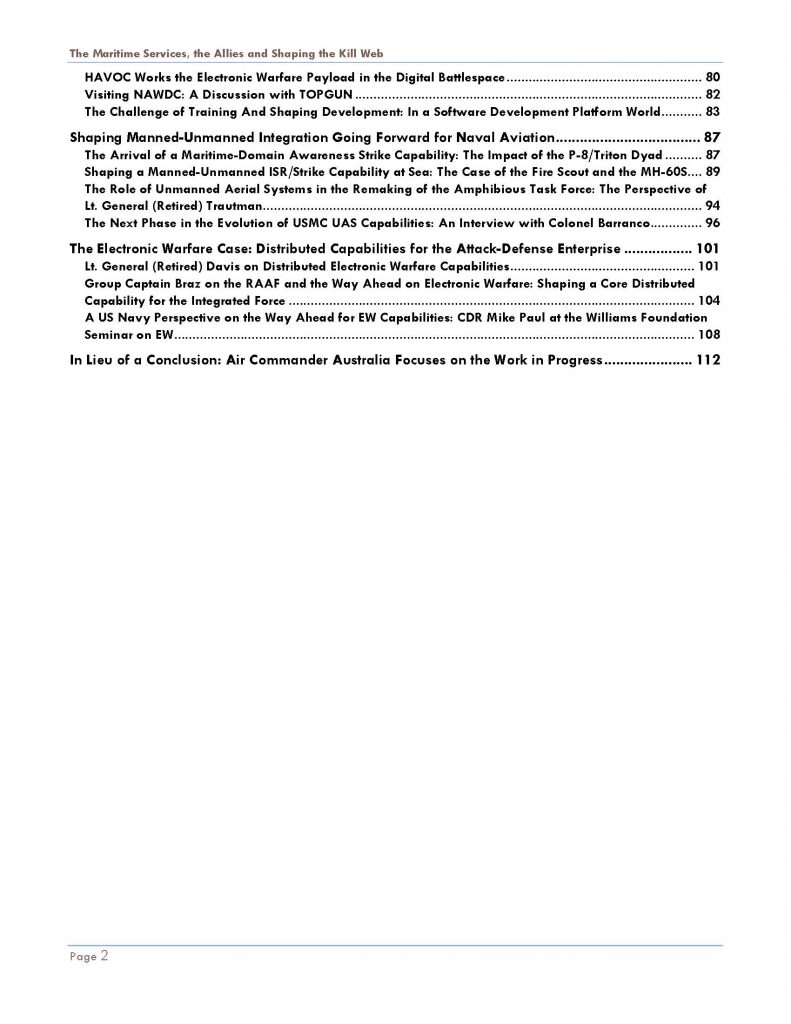
Please enter your name and email below and you will then be able to download the report directly.
Developer Post Update Test Form
Form for site admin/developers to run post-update to guarantee email functionality after major site updates.


